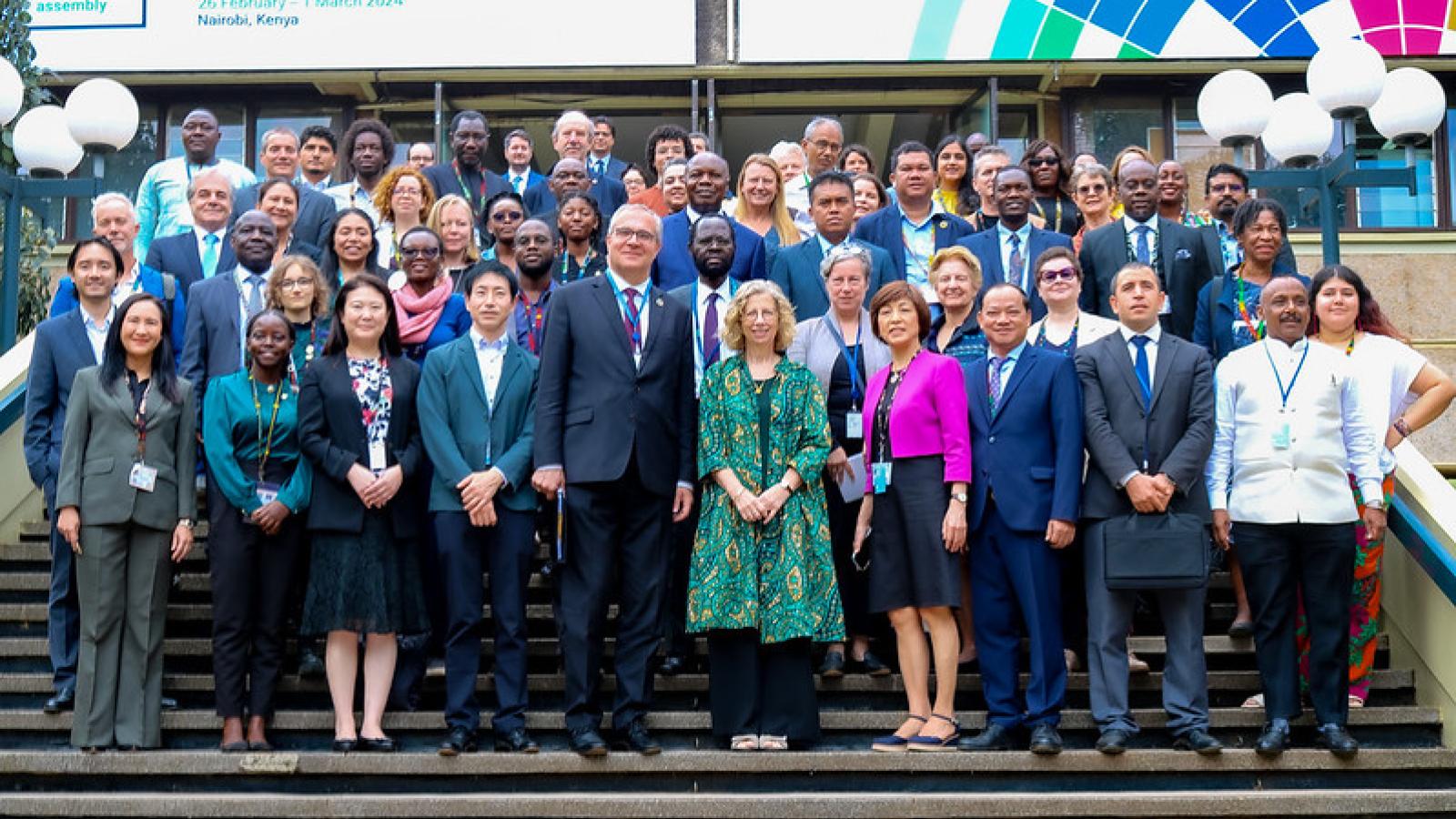Recap
Local Climate Action at the Forefront: How the UNEA-6 Cities & Regions Summit Elevated the Needs and Potential of Subnational Governments
During this Summit, mayors and regional leaders sounded a powerful call for innovation and collaboration to support and finance climate action on the ground.
Group picture of in-person participants of the UNEA-6 Cities and Regions Summit, UNEP Headquarters, Nairobi, Kenya (Credit: Geoffrey Sauke)
“What you do in your cities resonates across the world. When you make your cities green and sustainable, you are not just local heroes, you are global heroes.” Those were the inspiring words that Inger Anderson, Director of the UN Environment Programme, shared with attendees of the UNEA-6 Cities & Regions Summit in Nairobi in February.
Without a doubt, cities are at the heart of climate action. Home to half the world’s population and responsible for around 70% of global CO2 emissions and over half of global waste, cities are home to both the drivers of the three interconnected environmental challenges —and to many of the solutions to address them. As highlighted by Wade Crowfoot, Secretary for Natural Resources of the State of California, USA, “Climate change and biodiversity conservation are two sides of the same coin”, and cities and regions are where strong synergies can be realised.
But cities, as the Summit made clear, do not operate in a vacuum. Policies and actions in cities influence significant global frameworks like the Sustainable Development Goals and depend on the support of national and global governance structures to implement transformative change. And in order to successfully implement climate policies and initiatives, cities often depend on larger financing mechanisms.
So what are the transformative governance structures and financing mechanisms that can unlock transformative local action?
How Cities and Regions are Bridging the Environmental Action Gap through Multi-level Governance
Kisumu County, located on the eastern shore of Lake Victoria in Kenya, faces imminent threats from fluctuating water levels exacerbated by climate change, with profound consequences for the 50% of its population residing in informal settlements. “In order to deal with the effects of climate change, we need to deal with where the problems are greatest in the informal sector,” said Governor of Kisumu County, Peter Anyang’ Nyong’o. Recognizing the importance of local governments in collecting data for climate policies and developing context-specific solutions, the governor expressed that, “I do hope that organized constituents of local governments will be formally represented in international bodies like the UN because they govern the people or the world where the effects of climate change take place – what I call where the rubber touches the ground.”
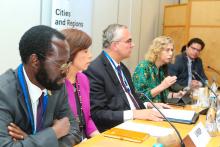
For the global goals set out in the Sustainable Development Goals, the Global Biodiversity Framework and the Multilateral Environmental Agreements to be achieved, action must be crosscutting, inclusive and localized.
Local governments are uniquely positioned to realize solutions to the complex sustainability challenges laid out in global frameworks. As one of the closest levels of government to urban dwellers, local and regional governments can play a critical role in developing and implementing responsive, context-sensitive solutions. They can facilitate specific local data collection, improve intergenerational equity by engaging youth, and develop tailored action plans to address specific geographic, economic, and cultural conditions. Their proximity to the challenges of climate change and the people most affected by it positions local governments as a conduit for translating global commitments into tangible actions and outcomes through policy implementation and enforcement.
The UNEA-6 Cities and Regions Summit offered a platform for city and regional leaders to call on national governments to formalize institutional arrangements and procedures for subnational participation in implementing global and regional multilateral agreements and commitments, while also providing resources for implementation. Concrete examples and opportunities were shared at the Summit. Colombia, host of the CBD COP 16 at the end of 2024, announced that a Cities Day will be convened to provide a space for further discussion on multi-level governance and the transition toward climate-resilient and biodiverse cities. And local and regional leaders highlighted how international organizations like the UN can develop and enhance metrics, indicators, and environment reporting platforms to reflect and measure subnational progress in addressing the triple planetary crisis.
The Need for Tailored Financial Support
While the contributions of local and regional climate action are essential to achieve the objectives of global strategies, local governments often lack the resources and funding to address these issues effectively. According to the Cities Climate Finance Leadership Alliance (CCFLA), the we need to be investing over $4.5 trillion per year in infrastructure, of which up to 27% must be dedicated to making this infrastructure low-emission and climate-resilient.
At the heart of the funding issue for local and regional climate action is the fact that the existing global financial structure was structured around the needs of countries. To ensure that funds for climate resilience and adaptation reach cities and regions, financers and governments need to develop new and innovative models to lower the barriers to support and assist low and middle-income countries in overcoming challenges to attracting financing, from low creditworthiness to lack of direct access to development banks. “Innovation has always been the cornerstone of progress,” Kweku Lisk, Deputy Mayor of Freetown, Sierra Leone, highlighted, when explaining how the Freetown initiative is funded by tokens sold in private and carbon markets. “When it comes to financing inclusive urban and territorial development, innovative approach is not only desirable, but necessary.”
Alongside these necessary transformations, the private sector can also step up to play a stronger role in strengthening investment in local climate projects through mechanisms like public-private partnerships, green bonds, and carbon markets. To attract private investment, governments need to ensure the feasibility and a strong return on engaging in such initiatives. International organizations can play a key role in building capacity among governments and private sector actors to develop investment-ready resilience projects. The Summit brought to the forefront several ways in which international organizations can act as conduits between transformative projects and potential financiers. For example, the UN Environment Programme’s Restoration Factory mentors entrepreneurs developing nature-based solutions projects, and helps them connect with investors. UrbanShift offers local governments a range of resources, like Finance Academies, that connect representatives directly with financers to learn how to strengthen the appeal of their resilience projects for investors. Initiatives like ICLEI’s Transformative Actions Program helps local governments strengthen project proposals to ensure bankability and success.
Connecting the Voices of Cities and Regions to Member States
Until the critical role of local and subnational governments is fully recognized and capacitated, our communities will remain vulnerable to the impacts of climate change, nature and biodiversity loss and pollution and waste. In order for local and subnational governments to effectively tackle the triple planetary crisis, an “all-hands-on-deck” approach is needed in order to invest in climate and nature and scale up multi-level governance through meaningful partnerships between all levels of governments, as well as the relevant stakeholders. By facilitating multi-level dialogues and offering capacity-building support and direct connections to financiers and the private sector, UrbanShift is actively working to close these gaps across its network of cities and countries, and forums like the Summit are vital for strengthening the call for transformation.
Following the Cities & Regions Summit, Mayor Joy Belmonte of Quezon City, Philippines ensured that the learnings and insights from the event were shared with the member states participating at the opening plenary of the 6th Session of the UN Environment Assembly, highlighting the need for cities & regions to be at the center of climate action. “In unison,” she said, “voices from local municipalities to regional bodies, national governments, and international organizations resoundingly underscored the importance of working together, including local communities and the private sector” and “We eagerly anticipate productive discussions at UNEA-6. With your leadership, we can build resilient and sustainable cities to realize the world we aspire to”.
Watch the full recording of the Summit
Watch Mayor Joy Belmonte report back on the Summit at UNEA-6 Opening Plenary
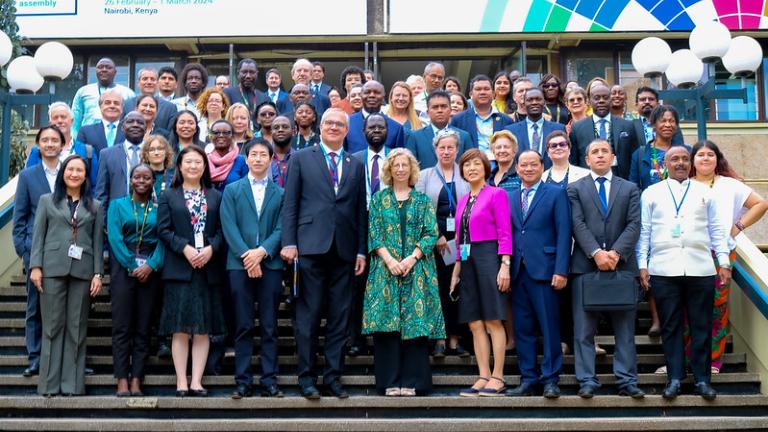
UNEA-6 Cites and Regions Summit
This Summit convened critical discussions around multi-level governance and urban finance in support of effective, inclusive and sustainable multilateral actions to tackle climate change, biodiversity loss, and pollution.
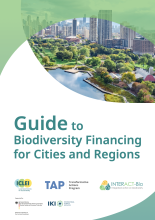
A Guide to Biodiversity Financing for Cities and Regions
Using in-depth definitions, case studies and resources, the guide covers innovative and traditional financing instruments to support biodiversity conservation, maintenance, restoration and preservation.
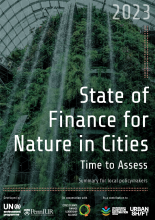
State of Finance for Nature in Cities 2023
In this publication, UNEP and the Penn Institute for Urban Research outline gaps and opportunities for financing Nature-based Solutions in cities, best practices from around the world, and actions that can be taken to scale up investments in nature.

How Ningbo is Paving the Way for Sustainable Development and Tourism
With the revitalization of Hangzhou Bay Wetland Park, Ningbo is proving the value of biodiversity-focused urban development.
